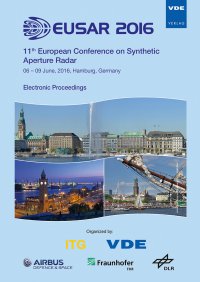Investigations on Bistatic SAR Image Formation for the SAOCOM-CS Mission
Konferenz: EUSAR 2016 - 11th European Conference on Synthetic Aperture Radar
06.06.2016 - 09.06.2016 in Hamburg, Germany
Tagungsband: EUSAR 2016
Seiten: 6Sprache: EnglischTyp: PDF
Persönliche VDE-Mitglieder erhalten auf diesen Artikel 10% Rabatt
Autoren:
Prats-Iraola, Pau; Rodriguez-Cassola, Marc; Moreira, Alberto (German Aerospace Center (DLR), Germany)
Inhalt:
The European Space Agency (ESA) is currently investigating the feasibility of adding a bistatic receive-only companion satellite (CS) to the Argentina’s L-band SAOCOM SAR satellite. Several scientific phases, driven by different applications, are planned in the frame of the mission, where different along-track and across-track bistatic baseline configurations are foreseen. The present contribution focuses on the efficient and accurate implementation of an imaging kernel for each mission phase. In terms of SAR focussing performance, the most challenging ones are the bistatic phases, where the CS satellite flies in front of the transmitter at a distance of 250 km in along-track, translating into effective squint angles of around -10deg. The proposed solution considers accurately the bistatic spaceborne geometry. Analyses in terms of the space variance of the geometry (in azimuth and in height) and results with simulated point targets are also presented.


